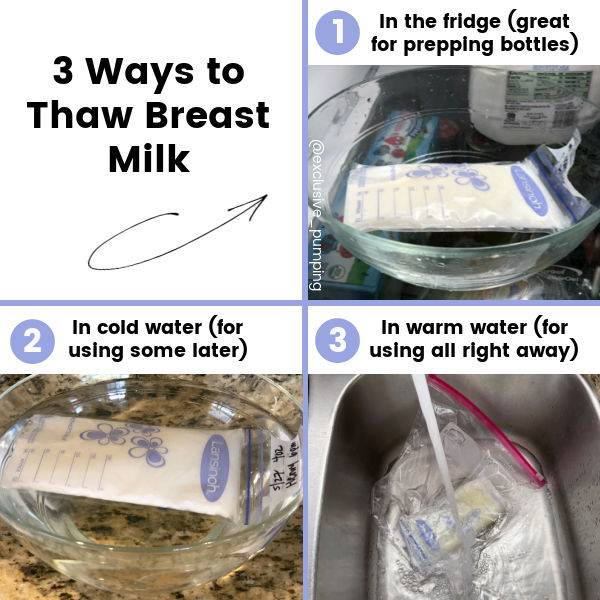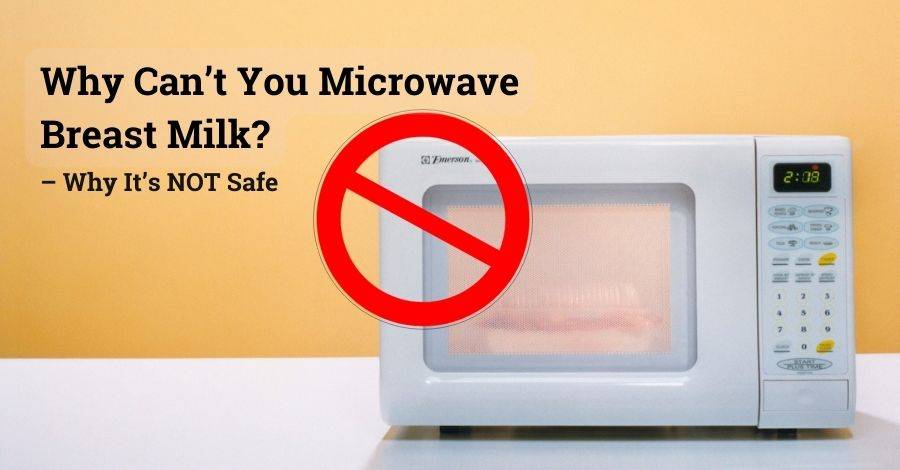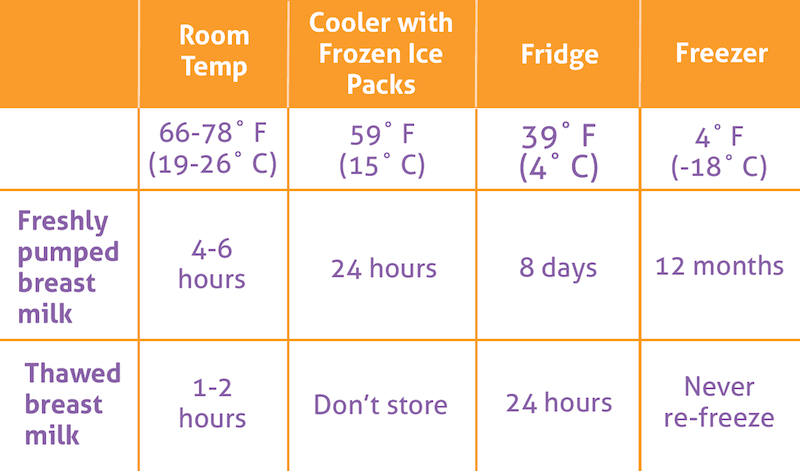
Key Points
- The article explains how to unfreeze breast milk safely and efficiently to preserve its nutritional value.
- Methods such as warm running water, a warm water bath, and a bottle warmer are recommended for quick thawing.
- Thawed milk should be used within 24 hours if refrigerated, and immediately if thawed in warm water.
- Microwaving and hot water are discouraged due to nutrient loss and bacterial risk.
- Proper labeling and handling are essential to ensure the milk’s quality and safety for the baby.
Every breastfeeding mama knows the magic of breast milk. It’s a nutritional powerhouse perfectly designed for your little one’s needs. But life can get busy, and sometimes having a stash of frozen breast milk provides peace of mind and convenience. However, when it’s time to use that frozen treasure, the question arises- how to unfreeze breast milk.
This comprehensive guide will equip you with all the knowledge you need to thaw frozen breast milk safely and efficiently. We’ll explore various thawing techniques, delve into safe storage guidelines for thawed milk, and answer some frequently asked questions.
How to Unfreeze Breast Milk Quickly
Life with a newborn is a whirlwind, and sometimes, waiting for frozen milk to thaw overnight just isn’t an option. Here are two effective strategies to get that milk ready in a jiffy:
Warm Running Water:
This is a popular and efficient technique. Place the frozen breast milk container (storage bag or bottle) under running warm water (not hot!). The ideal temperature is lukewarm, similar to bathwater temperature (around 100°F or 38°C). Swirl the container gently to promote even thawing. This method can thaw breast milk in as little as 15-20 minutes, depending on the amount.
Warm Water Bath:
Fill a bowl or clean container with lukewarm water (same temperature as above). Submerge the frozen breast milk container completely and ensure it doesn’t touch the bottom of the bowl. Change the water every 15 minutes to maintain consistent warmth. Thawing time can vary from 30 minutes to an hour, depending on the volume.
Bottle Warmer:
Many bottle warmers offer a gentle defrost setting that’s perfect for thawing breast milk. Follow the manufacturer’s instructions for your specific warmer. This method typically takes 20-30 minutes.

Things to Remember
- Never use hot water or boiling water. This can destroy valuable nutrients in breast milk and create hot spots that could burn your baby’s mouth.
- Avoid using the microwave. Microwaves can heat breast milk unevenly, creating hot pockets and compromising its nutritional integrity.
- Don’t thaw breast milk at room temperature. This can encourage bacterial growth, especially during warmer months.
- Thaw only the amount you need. Once thawed, breast milk has a limited shelf life.
- Don’t Refreeze Thawed Breast Milk. Once thawed, breast milk should be used within a specific timeframe. Refreezing can compromise the milk’s quality.

How to Defrost Breast Milk Quickly
Defrosting breast milk quickly is similar to unfreezing it but focuses more on transitioning the milk from a frozen state to a liquid state without overheating it. Here’s how to do it:
Refrigerator Thawing: If you have some time but need the milk ready sooner than usual, you can place the frozen milk in the refrigerator. This method typically takes 12-24 hours, but it ensures the milk thaws evenly and safely. For a quicker thaw, you can place the container on a plate in the coldest part of the fridge.
Warm Water: As mentioned earlier, placing the milk in a warm water bath or under warm running water is effective. This method helps defrost the milk more quickly while preserving its nutrients.
How Long Does Breast Milk Last After You Unfreeze It?
Once breast milk is thawed, its shelf life is limited. It’s important to use it within the appropriate time frame to ensure it’s safe for your baby. Generally, thawed breast milk can be kept in the refrigerator for up to 24 hours. It’s best to store it at the back of the fridge where the temperature is most consistent.

How Long Is Breast Milk Good for After Thawing?
After thawing, breast milk should ideally be used within 24 hours if kept in the refrigerator. If you leave it at room temperature, it’s best to use it within 2 hours. These guidelines help ensure that the milk retains its nutritional value and is free from bacterial contamination.
How Long Is Breast Milk Good for After Thawing in Warm Water?
If you thaw breast milk in warm water, you should use it immediately. The rapid change in temperature can increase the risk of bacterial growth, so it’s crucial to feed your baby or store the milk in the refrigerator right away and use it within 24 hours. Avoid refreezing thawed breast milk, as this can degrade its quality and safety.
How to Unfreeze Breast Milk in Cold Water
Thawing breast milk in cold water is another method, especially if you’re not in a hurry. This method is gentler and helps preserve the milk’s nutrients. Here’s how to do it:
Fill a Container with Cold Water: Place the sealed breast milk bag or bottle in a bowl or container filled with cold water.
Change the Water Regularly: As the water warms up from the frozen milk, change it to keep the process going. This method can take around 30-60 minutes.
Refrigerate or Use Immediately: Once thawed, you can refrigerate the milk for up to 24 hours or use it immediately.
Tips for Handling Thawed Breast Milk
- Always label your breast milk with the date it was pumped and frozen. This helps you keep track of its age and ensures you use the oldest milk first.
- Never use a microwave to thaw or heat breast milk. Microwaves can create hot spots that can scald your baby and degrade the milk’s nutrients.
- When mixing thawed breast milk, gently swirl the container instead of shaking it. Shaking can break down the proteins and reduce the milk’s nutritional value.
- Always check the milk’s smell and taste before feeding it to your baby. If it smells sour or has an off taste, it’s best to discard it.
Also Read: Why Can’t You Microwave Breast Milk? – Why It’s NOT Safe
Benefits of Properly Thawed Breast Milk
- Proper thawing methods help preserve the vital nutrients in breast milk, ensuring your baby gets the best possible nutrition.
- Following the correct thawing procedures reduces the risk of bacterial contamination, keeping your baby safe from potential infections.
- Knowing how to thaw breast milk quickly and safely makes feeding time easier, especially during those late-night or early-morning feedings.
Conclusion
Unfreezing and thawing breast milk correctly is essential to maintaining its quality and safety. By following the methods outlined in this guide, you can ensure that your baby receives the best nutrition possible from your stored breast milk. Whether you need to thaw milk quickly or have time for a slower method, these tips will help you handle breast milk safely and effectively.
Remember, the key is to plan ahead and choose the thawing method that best fits your schedule and needs. With a little practice, you’ll become a pro at unfreezing breast milk, ensuring your baby always has access to this vital resource. Happy feeding!
References:
- How to store, freeze and thaw breast milk – https://www.medela.com/en/breastfeeding-pumping/articles/pumping-tips/how-to-store-freeze-and-thaw-breast-milk
- Storing and Thawing Breast Milk – WIC Breastfeeding Support – https://wicbreastfeeding.fns.usda.gov/storing-and-thawing-breast-milk#
- General guidelines for thawing frozen breastmilk – https://www.urmc.rochester.edu/encyclopedia/content.aspx?contenttypeid=90&contentid=P02682
- How to Safely Store, Use, and Thaw Frozen Breast Milk – https://www.healthline.com/health/parenting/how-to-thaw-breast-milk

Hi, I’m Lindley! I’m a stay-at-home-mom sharing all of the tips and tricks I learn throughout my motherhood journey. I’m now navigating through wife life and being a mom while blogging my crazy adventures. I’m so glad to have you along for the ride!



